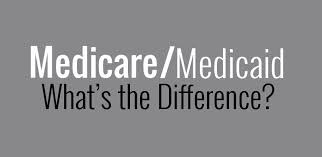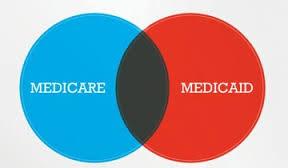Medicare Versus Medicaid – what are the similarities and differences? Both programs are government-sponsored through federal, state, or a combination thereof.
Medicaid is a joint federal and state program that helps with medical costs for some people with limited income and resources. Medicaid programs vary from state to state, but most health care costs are covered if you qualify for both Medicare and Medicaid.
Medicare is the federal health insurance program for people who are 65 or older, certain younger people with disabilities, and people with End-Stage Renal Disease (permanent kidney failure requiring dialysis or a transplant, sometimes called ESRD).
Medicaid is tied in with the public health insurance exchanges while Medicare is separate.

Medicaid funding is generally a 50/50 split between federal and state while Medicare is 100% federally funded.
Medicare is more standardized between states since it is entirely funded while coverage and policies may vary between states for Medicaid. Additionally, as part of the Affordable Care Act, Medicaid is expanding although not uniformly. Individual states have the choice as to whether or not to expand with those opting to expand receiving federal funding (100%) to cover the first three years of expansion. The states are also permitted to choose whether or not to setup a state health insurance exchange or use the federal/national exchanges. Both of these options increase Medicaid disparity between each of the states.
While Medicare and Medicaid are separate programs, individuals may be enrolled in both programs simultaneously, which is deemed dual eligible. In this case, Medicare is considered primary while Medicaid is considered secondary.


